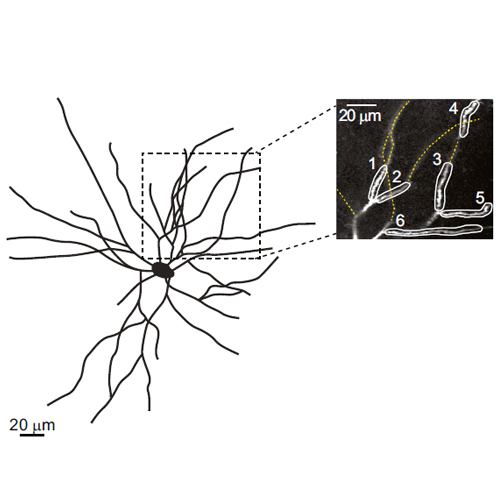NMDA Receptor-Dependent Multidendrite Ca2+ Spikes Required for Hippocampal Burst Firing In Vivo
20-Feb-2014
High-frequency bursts of action potentials (APs) are a distinctive form of signaling in various types of mammalian central neurons. In CA1 hippocampal pyramidal neurons in vivo, such complex spike bursts (CSs) are detected during various behaviors and are considered to be particularly important for learning- and memory-related synaptic plasticity. Here, we combined whole-cell recordings and two-photon imaging in mouse CA1 pyramidal neurons to investigate the cellular mechanisms underlying CSs in vivo. Our results demonstrate that CSs are of synaptic origin, as they require N-methyl-D-aspartate (NMDA) receptor activation. We identify voltage-gated Ca2+ channel-dependent, spike-like depolarizations as integral components of the CSs. These Ca2+ spikes were invariably associated with widespread large-amplitude Ca2+ transients in basal and apical dendrites. Together, our results reveal a type of NMDA receptor-dependent multidendrite Ca2+ spike required for high-frequency bursting in vivo.











